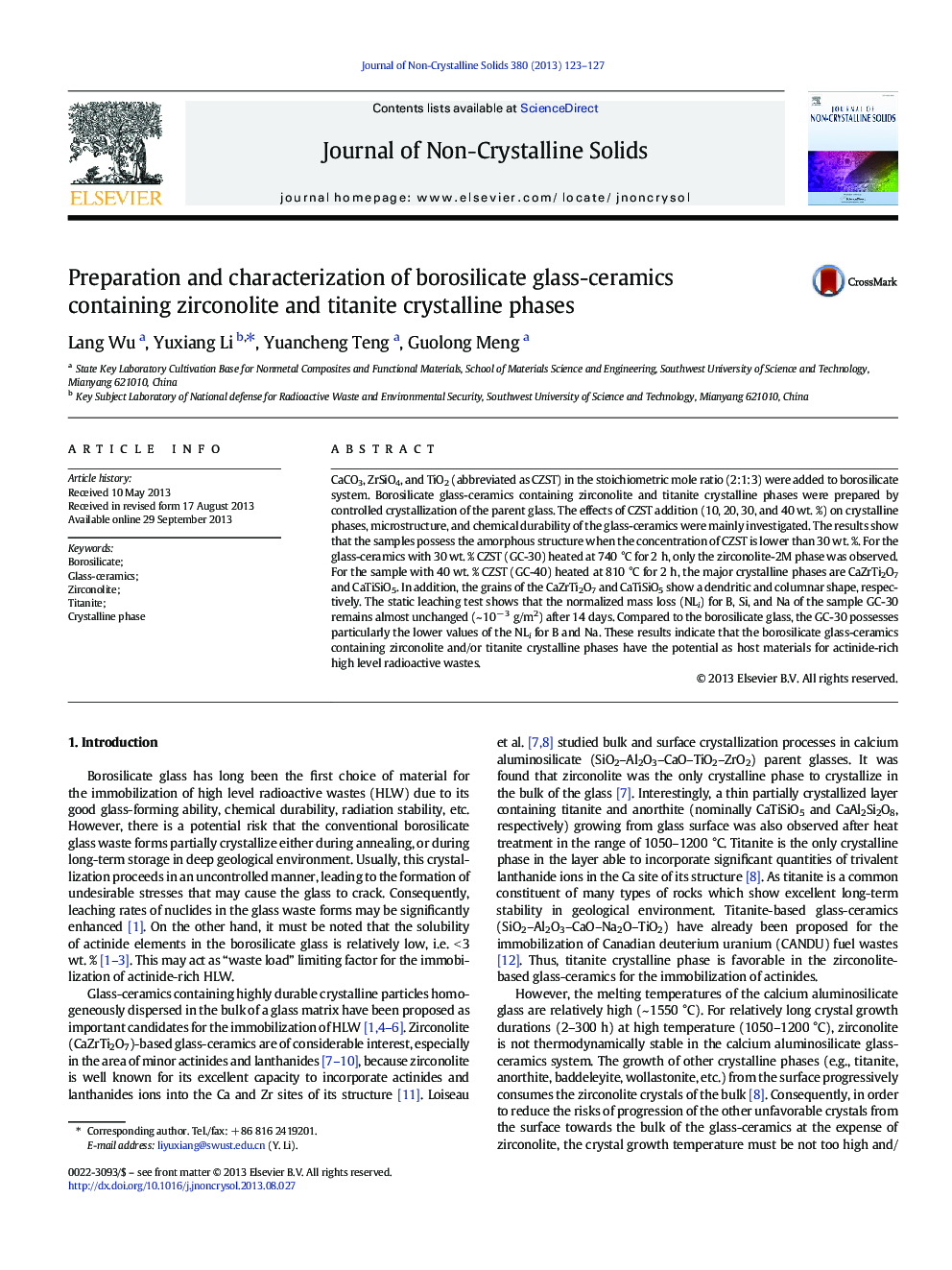| Article ID | Journal | Published Year | Pages | File Type |
|---|---|---|---|---|
| 1481190 | Journal of Non-Crystalline Solids | 2013 | 5 Pages |
•CaCO3, ZrSiO4, and TiO2 as nucleating agents were added to borosilicate system.•Only CaZrTi2O7 phase was observed for CZST-30 (i.e. 30 wt. % of nucleating agents).•The major crystalline phases of CZST-40 are CaZrTi2O7 and CaTiSiO5 phases.•The CZST-30 possesses the lower NLi value of B and Na when compared to the CZST-0.
CaCO3, ZrSiO4, and TiO2 (abbreviated as CZST) in the stoichiometric mole ratio (2:1:3) were added to borosilicate system. Borosilicate glass-ceramics containing zirconolite and titanite crystalline phases were prepared by controlled crystallization of the parent glass. The effects of CZST addition (10, 20, 30, and 40 wt. %) on crystalline phases, microstructure, and chemical durability of the glass-ceramics were mainly investigated. The results show that the samples possess the amorphous structure when the concentration of CZST is lower than 30 wt. %. For the glass-ceramics with 30 wt. % CZST (GC-30) heated at 740 °C for 2 h, only the zirconolite-2M phase was observed. For the sample with 40 wt. % CZST (GC-40) heated at 810 °C for 2 h, the major crystalline phases are CaZrTi2O7 and CaTiSiO5. In addition, the grains of the CaZrTi2O7 and CaTiSiO5 show a dendritic and columnar shape, respectively. The static leaching test shows that the normalized mass loss (NLi) for B, Si, and Na of the sample GC-30 remains almost unchanged (~ 10− 3 g/m2) after 14 days. Compared to the borosilicate glass, the GC-30 possesses particularly the lower values of the NLi for B and Na. These results indicate that the borosilicate glass-ceramics containing zirconolite and/or titanite crystalline phases have the potential as host materials for actinide-rich high level radioactive wastes.
